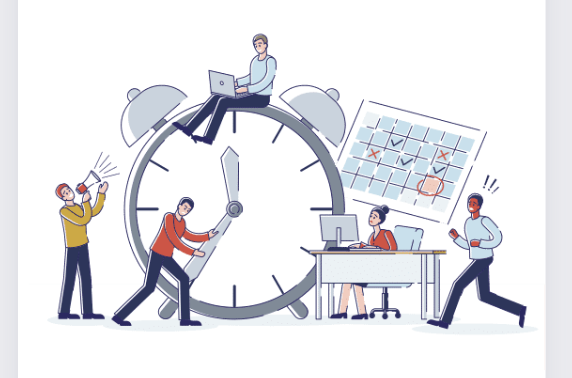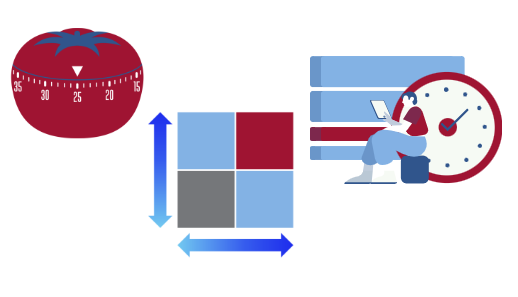
Mastering Time Management for High Performance
Time Management seems to be quite an issue for many people, including business owners, and when you’re not on top of it, it can seriously hinder your productivity. This in turn can cause some negative side effects that also affect other areas of your life.
So, are you ready to uncover the secrets to achieving more in less time? This week, we break down the essentials of mastering time management for high performance. Whether you’re a business owner, an entrepreneur, or simply someone looking to make the most out of each day, these tips will help you get there.

The Importance of Time Management
Time management is more than just a productivity buzzword—it’s a fundamental skill that separates top performers from everyone else. Effective time management allows you to prioritise tasks, reduce stress, and ultimately achieve more with less effort. Think of it as a way to create structure and focus in your day, which in turn leads to better results.
Understanding Your Current Time Management Habits
Before we can improve our time management skills, it’s important to understand where we currently stand. Take a moment to reflect on your typical day. How do you spend your time? Are there specific activities that consume more time than they should? Are there periods of the day when you’re more productive?
Identifying your current habits is the first step toward improvement.

Techniques for Mastering Time Management
Now, let’s dive into some powerful time management techniques that can help you become more productive and efficient.
Pomodoro Technique:
First up is the Pomodoro Technique. This method involves working in focused 25-minute intervals, known as ‘Pomodoros,’ followed by a 5-minute break. After completing four Pomodoros, take a longer break of 15-30 minutes. This technique helps maintain high levels of concentration and prevents burnout. Give it a try and see how it boosts your productivity.
Eisenhower Matrix:
Next, we have the Eisenhower Matrix, a prioritisation tool that helps you categorise tasks based on urgency and importance. Tasks are divided into four quadrants: urgent and important, important but not urgent, urgent but not important, and neither urgent nor important. Focus on tasks in the first two quadrants to ensure you’re working on what truly matters.
Time Blocking:
Time blocking involves dividing your day into blocks of time, each dedicated to a specific task or group of tasks. This helps create a structured schedule and reduces the time spent switching between activities. For example, you might block out two hours in the morning for deep work, followed by an hour for meetings, and so on. Customise your blocks to fit your workflow and priorities.

Tools to Enhance Your Time Management
In addition to these techniques, there are several tools that can aid in your time management efforts. Here are a few of my favourites:
Productivity Apps:
Apps like Todoist, Trello, and Asana can help you organise tasks, set deadlines, and track progress. These tools provide a visual overview of your to-do list and make it easier to stay on top of your responsibilities.
Calendar Apps:
Using calendar apps like Google Calendar or Microsoft Outlook to schedule your time blocks can help ensure you stick to your planned schedule. Set reminders and alerts to stay on track throughout the day.
Focus Tools:
Tools like Focus@Will or Brain.fm provide background music designed to improve focus and concentration. Experiment with different types of music or ambient sounds to find what works best for you.
Overcoming Procrastination
Even with the best time management techniques and tools, procrastination can still be a challenge. Here are a few strategies to overcome it:
Set Clear Goals:
Having clear, specific goals can provide the motivation needed to start and complete tasks. Break larger goals into smaller, manageable steps to make them less overwhelming.
Eliminate Distractions:
Identify common distractions and take steps to minimise them. This could mean turning off notifications, creating a dedicated workspace, or setting boundaries with others during work hours.
Use the Two-Minute Rule:
If a task will take less than two minutes to complete, do it immediately. This prevents small tasks from piling up and becoming a source of procrastination.
Maintaining Balance and Avoiding Burnout
Lastly, it’s important to maintain a balance between work and personal life to avoid burnout. Schedule time for breaks, hobbies, and relaxation. Remember, high performance isn’t about working non-stop—it’s about working effectively and sustainably.

Closing Thoughts
It is so important to identify and understanding your current habits to implement powerful time management techniques. If you have any questions or want to share your own time management tips, feel free to reach out to me on LinkedIn or leave a comment.
Remember, mastering time management is an ongoing process. Be patient with yourself and keep experimenting with different techniques until you find what works best for you.
If you enjoyed this article please leave a review, and share it with others who might benefit.
Until next time, keep striving for high performance!
Events
We have a bunch of events coming up over the next few months covering everything to do with Mastering your Business Growth and making your business work without you, so you can focus on the other important things, like life and family etc.
If you would like to know more, sign up and join us, your first event is on us, with compliments.





